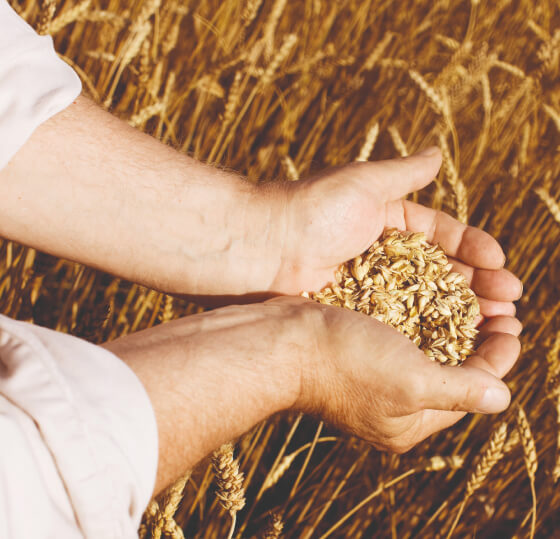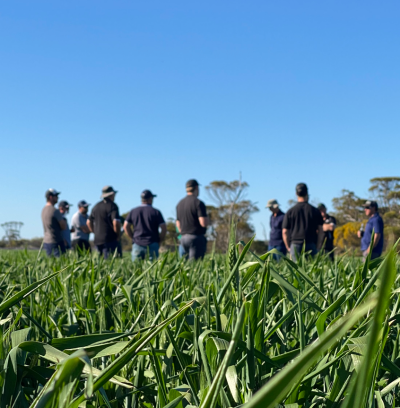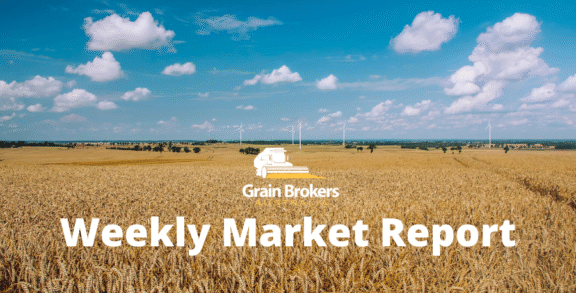
Early last week, before the US President’s “Obliteration Day” announcement of sweeping and unprecedented tariffs on most of America’s global trading partners, the United States Department of Agriculture released the 2025 Prospective Plantings report, with more corn but less cotton, soybeans and wheat the highlights.
The data for this year’s report came from a planting intentions survey of almost 74,000 farmers conducted between February 27 and March 18. The results reveal a decrease in the total area allocated to the USDA’s 22 principal crops, which range from corn to potatoes and tobacco. The total area is expected to fall to 125.41 million hectares, 0.4 per cent or just over 500,000 hectares less than the final planted area in 2024/25. This is the second consecutive reduction after 4 million hectares were dropped out of principal crop rotations last year compared to 2023.
The report’s biggest takeaway was that the US farmers are planting lots of corn this year. USDA pegged the corn area for the 2025/26 crop year at 38.58 million hectares, an increase of 5.2 per cent or 1.91 million hectares, and the first time the corn area has surpassed the 38.45 million hectare (95 million acre) benchmark in 12 years. The figure was well above the average of the trade estimates and more than 500,000 hectares above the USDA’s projections at the Agriculture Outlook Forum in February.
The US accounts for around 31 per cent of corn production worldwide, outpacing China’s 24 per cent contribution, and farmers across the US believe they have an easier time producing higher yields of corn than soybeans in 2025. There appears to be more optimism around corn profitability compared to soybeans this season, with crop budgets generally indicating lower returns from soybeans than from corn, assuming trend yields.
The planted area is expected to be unchanged or higher year-on-year in 40 of the 48 reporting states. In the three biggest growing states of Iowa, Illinois and Nebraska, which collectively account for 36.9 per cent of total plantings, the area is expected to increase by 5 per cent, 3 per cent and 5 per cent, respectively. If the farmer’s seeding intentions become reality, it would be the third-biggest corn area since 1944, and the areas in Idaho, Nevada, North Dakota, Oregon, and South Dakota will be the largest on record.
A majority of the area increase in corn has swung across from soybeans, with the farmer survey indicating a decrease in the soybean area of 4.1 per cent, or 1.44 million hectares, to 33.79 million hectares. This was slightly lower than the average of the trade projections and around 200,000 hectares lower than the USDA’s forecast at the February Outlook Forum.
The planted area forecasts are unchanged or lower in 23 of the 29 reporting states compared to last year. The three biggest soybean-growing states are Illinois, down 2.8 per cent to 4.25 million hectares, followed by Iowa, 4.5 per cent lower on 3.88 million hectares, and Minnesota, down 5.4 per cent to 2.83 million hectares.
Once the biggest global producer of soybeans, the mantle now belongs to Brazil, which accounts for around 40 per cent of worldwide output compared to the US, which has fallen to 28 per cent of the world’s production. Decreasing soybean prices relative to corn is a factor in the switch. Farmers are also endeavouring to negotiate more favourable and flexible lease arrangements on soybean hectares over corn in 2025.
The total area planted to wheat for harvest in 2025 is estimated at 18.35 million hectares, down 1.6 per cent or almost 300,000 hectares from 2024. If realized, this represents the second lowest all-wheat planted area in the US since records began in 1919. All wheat categories are expected to be lower, with spring wheat the biggest surprise.
At 13.48 million hectares, the winter wheat area is down around 2 per cent from the USDA’s February estimate and 0.2 per cent lower than last year. Of this total, about 9.55 million hectares are hard red winter wheat, 2.46 million hectares are soft red winter wheat, and 1.48 million hectares are white winter wheat.
Accounting for more than 50 per cent of the winter wheat area, Kansas, Texas and Oklahoma plantings are expected to be 3.9 per cent lower, unchanged, and down 4.6 per cent, respectively, to 2.95, 2.23 and 1.68 million hectares. Montana bucked the trend with seeding ideas 17.9 per cent higher at 930,000 hectares.
With seeding commencing this month, the area expected to be planted to spring wheat this year is estimated at 4.05 million hectares, down 5.7 per cent or almost 250,000 hectares compared to last year. Around 3.8 million hectares, or 94 per cent of that total, will be sown down to hard red spring wheat varieties. This will be the smallest spring wheat area since 1970 if the survey results become reality, with half the total decrease found in North Dakota. The durum wheat area for harvest in 2025 is expected to total 815,000 hectares, down 2.4 per cent year-on-year.
The largest decrease in percentage terms goes to cotton, with planting intentions down 11.8 per cent to 3.99 million hectares, the lowest planted area in over a decade. Profitability has been poor for several years now, and it has one of the highest export proportions relative to production, making it very vulnerable to retaliatory tariffs.
Among the other principal crops, the US sorghum area is estimated to be 4.2 per cent higher this year at 2.66 million hectares, with the area in Kansas and Texas, the two biggest producing states, up 3.3 per cent and 11.8 per cent, respectively.
On the canola front, farmers have lowered their seeding ideas by 6.7 per cent from last year’s record to 1.04 million hectares. In North Dakota, which accounts for 80 per cent of the total area, growers have decreased their seeding ideas by 4.2 per cent.
Barley is also losing grower love in the US, with the forecast area down 2.4 per cent to a record low of 940,000 hectares. In Montana, which accounts for more than a quarter of the planted area, intentions are down 11.1 per cent. So much for a bump in the barley area due to the threat of tariffs!
The final makeup of the US crop profile invariably changes due to influences such as unfavourable weather conditions, changing price relativities amongst seeding alternatives, the price of crop inputs, and geopolitical surprises. However, with the self-imposed tariff war rapidly gaining momentum, we are entering a period of exceptional uncertainty for the US farmer, with significant policy changes in trade and biofuels at the forefront.
Call your local Grain Brokers Australia representative on 1300 946 544 to discuss your grain marketing needs.
Written by Peter McMeekin.





